Related Research Articles

The Pittsburgh Pirates were an American professional ice hockey team in the National Hockey League (NHL), based in Pittsburgh from 1925–26 to 1929–30. The nickname comes from the baseball team also based in the city. For the 1930–31 season, the team moved to Philadelphia, and played one season as the Philadelphia Quakers.

The New York Americans, colloquially known as the Amerks, were a professional ice hockey team based in New York City from 1925 to 1942. They were the third expansion team in the history of the National Hockey League (NHL) and the second to play in the United States. The team never won the Stanley Cup, but reached the semifinals twice. While it was the first team in New York City, it was eclipsed by the second, the New York Rangers, which arrived in 1926 under the ownership of the Amerks' landlord, Madison Square Garden. The team operated as the Brooklyn Americans during the 1941–42 season before suspending operations in 1942 due to World War II and long-standing financial difficulties. The demise of the club marked the beginning of the NHL's Original Six era from 1942 to 1967, though the Amerks' franchise was not formally canceled until 1946.
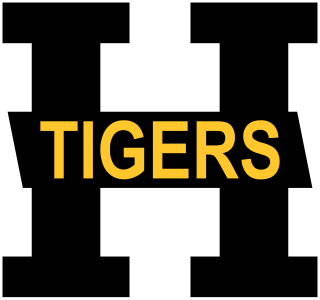
The Hamilton Tigers were a professional ice hockey team based in Hamilton, Ontario. They competed in the National Hockey League (NHL) from 1920 to 1925. The Tigers were formed by the sale of the Quebec Bulldogs NHL franchise to Hamilton interests. After years of struggling, the franchise finished first in the league in the 1924–25 NHL season, but a players' strike before the playoffs resulted in the franchise's dissolution. The players' contracts were sold to New York City interests to stock the expansion New York Americans. A namesake amateur team existed prior to and during the NHL team's existence, and a minor league professional team named the Hamilton Tigers existed from 1926 to 1930.
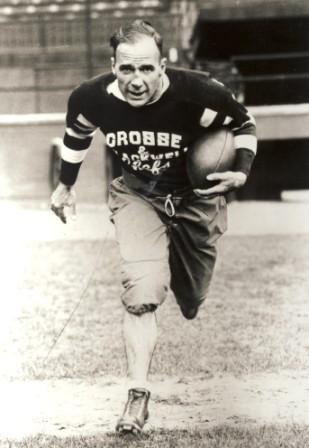
Lionel Pretoria Conacher, MP, nicknamed "The Big Train", was a Canadian athlete and politician. Voted the country's top athlete of the first half of the 20th century, he won championships in numerous sports. His first passion was Canadian football; he was a member of the 1921 Grey Cup champion Toronto Argonauts. He was a member of the Toronto Maple Leafs baseball team that won the International League championship in 1926. In hockey, he won a Memorial Cup in 1920, and the Stanley Cup twice: with the Chicago Black Hawks in 1934 and the Montreal Maroons in 1935. Additionally, he won wrestling, boxing and lacrosse championships during his playing career. He is one of three players, including Joe Miller and Carl Voss, to have their names engraved on both the Grey Cup and Stanley Cup.

Roy Thomas "Shrimp" Worters was a Canadian professional Hockey Hall of Fame goaltender who played twelve seasons in the National Hockey League for the Pittsburgh Pirates, Montreal Canadiens and New York Americans.
The 1925–26 NHL season was the ninth season of the National Hockey League (NHL). The NHL dropped the Hamilton, Ontario team and added two new teams in the United States (US), the New York Americans and the Pittsburgh Pirates to bring the total number of teams to seven. The Ottawa Senators were the regular-season champion, but lost in the NHL playoff final to the Montreal Maroons. The Maroons then defeated the defending Stanley Cup champion Victoria Cougars of the newly renamed Western Hockey League three games to one in a best-of-five series to win their first Stanley Cup.

The Duquesne Gardens was the main sports arena located in Pittsburgh, Pennsylvania, during the first half of the 20th century. Built in 1890, the building originally served as a trolley barn, before becoming a multi-purpose arena. The Gardens opened three years after a fire destroyed the city's prior sports arena, the Schenley Park Casino, in 1896. Over the years, the Gardens was the home arena of several of Pittsburgh's historic sports teams, such as ice hockey's Pittsburgh Pirates and Pittsburgh Hornets. The Western Pennsylvania Hockey League, which was the first ice hockey league to openly hire and trade players, played all of its games at the Gardens. The arena was also the first hockey rink to ever use glass above the dasher boards. Developed locally by the Pittsburgh Plate Glass Company, Herculite glass was first tested in Pittsburgh. Most rinks were using wire mesh before the shatterproof glass was invented. Finally, the Pittsburgh Ironmen, a charter member of the Basketball Association of America, played at the Gardens from 1946 to 1947.

Sports in Pittsburgh have been played dating back to the American Civil War. Baseball, hockey, and the first professional American football game had been played in the city by 1892. Pittsburgh was first known as the "City of Champions" when the Pittsburgh Pirates, Pittsburgh Panthers football team, and Pittsburgh Steelers won multiple championships in the 1970s. Today, the city has three major professional sports franchises, the Pirates, Steelers, and Penguins; while the University of Pittsburgh Panthers compete in a Division I Power Five conference, the highest level of collegiate athletics in the United States, in both football and basketball. Local universities Duquesne and Robert Morris also field Division I teams in men's and women's basketball and Division I FCS teams in football. Robert Morris also fields Division I men's and women's ice hockey teams.

The Philadelphia Quakers were an American professional ice hockey team that played only one full season in the National Hockey League (NHL), 1930–31, at the Philadelphia Arena in Philadelphia. They were the successors of the Pittsburgh Pirates.
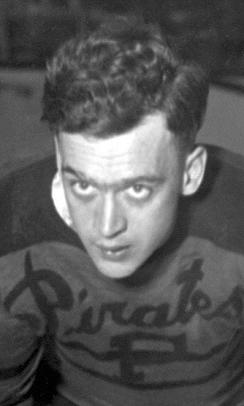
Wilfred Belmont "Tex" White was a Canadian professional ice hockey forward who played seven seasons in the National Hockey League for the Pittsburgh Pirates, New York Americans and Philadelphia Quakers between 1925 and 1931.
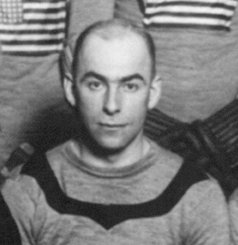
Herbert Joseph Drury was a Canadian-born American ice hockey defenseman who played six seasons in the National Hockey League for the Pittsburgh Pirates and Philadelphia Quakers. Internationally he played for the American national team at the 1920 Summer Olympics and 1924 Winter Olympics, winning a silver medal both times.
Pittsburgh Yellow Jackets was the name of three separate ice hockey teams based in Pittsburgh, Pennsylvania. The original team was part of the United States Amateur Hockey Association (USAHA) from 1920 to 1925 and developed from predecessors dating back to 1915. After winning the USAHA Championship in 1924 and 1925, the ostensibly amateur Yellow Jackets turned fully professional and became the Pittsburgh Pirates of the National Hockey League. After the Pirates relocated in 1930 to play as the Philadelphia Quakers, a second Pittsburgh Yellow Jackets club played for two seasons in the International Hockey League, a minor professional circuit. A third Yellow Jackets team was organized at the amateur level in 1935 by John H. Harris and competed in the Eastern Amateur Hockey League before folding in 1937.
William Vincent Dwyer, known as "Big Bill" Dwyer, was an early Irish-American Prohibition gangster and bootlegger in New York during the 1920s. He used his profits to purchase sports properties, including the New York Americans and Pittsburgh Pirates of the National Hockey League (NHL), as well as the Brooklyn Dodgers of the National Football League (NFL). He eventually was brought down by the U.S. government through legal actions, leaving Dwyer penniless at the end of his life in 1946.
The Pittsburgh Shamrocks were a professional ice hockey team, based in Pittsburgh, Pennsylvania that played in the International Hockey League in 1935–36. The team played all of its home games at Duquesne Garden. During their lone season in existence, the Shamrocks finished in fourth place in the West Division behind the Detroit Olympics, Cleveland Falcons, and Windsor Bulldogs. The Shamrocks scored 137 goals and allowed 170. The team folded after one season. It is estimated that the team lost $36,000 during 1935–36 season.
Francis Joseph "Frank, Duke" McCurry was a Canadian professional ice hockey left winger who played 145 games in the National Hockey League, with the Pittsburgh Pirates between 1925 and 1929.
The Western Pennsylvania Hockey League (WPHL) was an originally amateur and later professional ice hockey league founded in 1896 and existing through 1909. Based in Pittsburgh, Pennsylvania, the league became the pre-eminent ice hockey league in the United States. It was the first league to openly hire and trade players.
Harold William "Baldy" Cotton was a Canadian professional ice hockey player who played 12 seasons in the National Hockey League for the Pittsburgh Pirates, Toronto Maple Leafs and New York Americans.
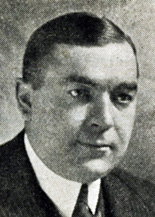
Roy Dunlap Schooley was a former hockey referee who later became the manager of both Duquesne Gardens, located in Pittsburgh, Pennsylvania, and the Pittsburgh Yellow Jackets of the United States Amateur Hockey Association. In 1925, the Yellow Jackets hockey club, evolved into the Pittsburgh Pirates of the National Hockey League. On March 16, 1920 at the Duquesne Gardens, he helped found USA Hockey, the governing body for amateur ice hockey in the United States. That same year, he assembled the first U.S. Olympic Hockey Team which won a silver medal at the 1920 Summer Olympics in Antwerp, Belgium and is credited with helping to foster the growth of hockey in the country.
The following is a timeline of the history of the city of Pittsburgh, Pennsylvania, US.
References
- ↑ "Pittsburgh Yellow Jackets Hockey History". web.archive.org. 2009-07-15. Retrieved 2023-03-10.
- ↑ "Pittsburgh Pirates (NHL) 1925-30". web.archive.org. 2009-08-03. Retrieved 2023-03-10.
- ↑ "Penguins' Winter Classic Logo Pays Homage to 1925 NHL Pirates". NHL.com. Retrieved 2023-03-10.
- ↑ Stark, Logan (2018-05-03). "Hockey History: The Pirates - Pittsburgh's First NHL Team". PensBurgh. Retrieved 2023-03-10.